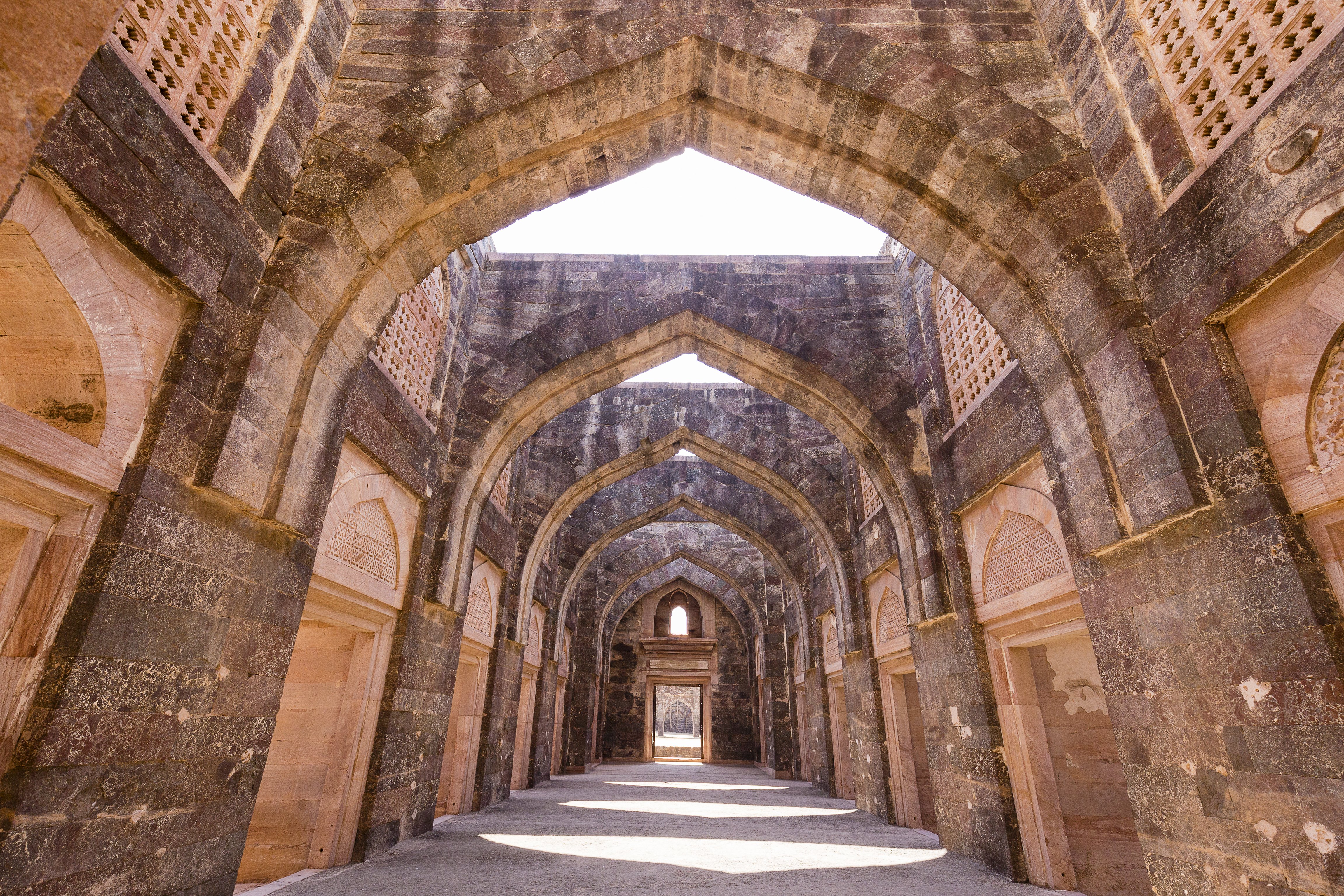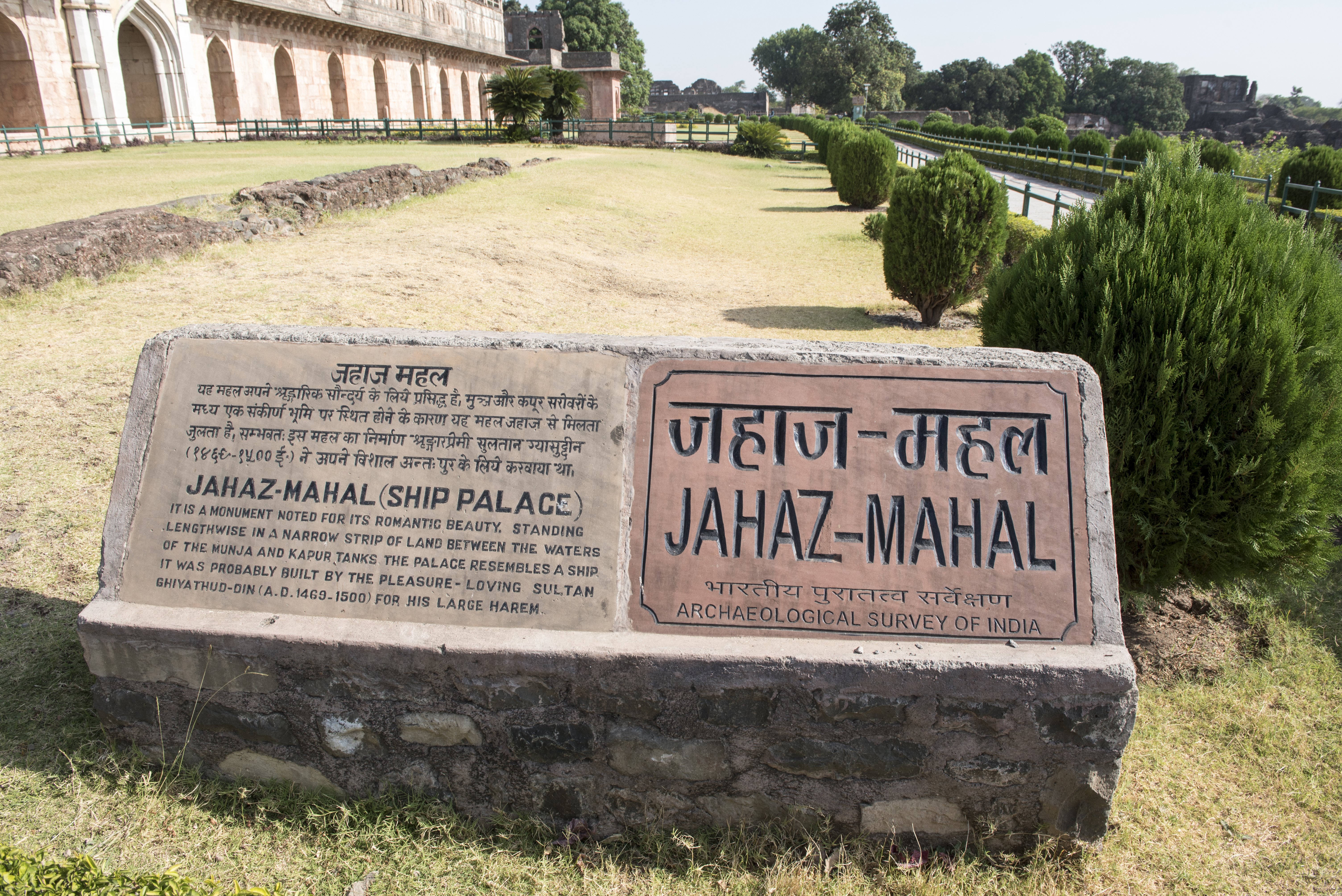Jahaz Mahal, or the ‘Ship Palace’ in Mandu, is a double-storeyed structure that represents the classical phase of architecture in Mandu. The structure is on a narrow strip of land, sandwiched between Munj Talao and Kapur Talao, which lends it the appearance of a ship floating in water.

This exceptional structure is one of the most distinctive monuments in India. During monsoons, the reflection of the monument on the water is a beautiful sight and makes it one of the most visited tourist attractions in Mandu. The nearby Hindola Mahal hosts the light and sound show which also is a big draw for tourists.
History
Jahaz Mahal was built in the 15th century during the rule of Mandu Sultan Ghiyas-ud-din Khilji for his 15,000 queens. Khilji was a Pathan Sultan who succeeded his father, Mahmud Khilji, in 1469 and became the ruler of the Malwa Kingdom. He benefited from the various peace treaties his father had signed with the neighbouring kingdoms.
Khilji’s harem for his 15,000 queens was built in such a way that provided them with complete autonomy and allowed them to enjoy a life filled with luxuries while shielding them from the eyes of the common man.

Architecture
Jahaz Mahal is a combination of Afghan, Mughal, Hindu and Mesopotamian architectural styles. The monument stands tall at 110 metres and is 15 metres in width. The main entrance of the palace is from the east, where there is a recessed arch flanked on each side by six arched openings protected by a continuous overhanging cornice supported by stone brackets.
Three rooms on the lower floor are connected by a single corridor, which ends with rooms at either end, with a bathing pool nearby built for the queens. Behind all three rooms is a huge pavilion attached that overlooks the Munj Sagar Talab, offering a stunning view at night. These rooms are said to be used by the women of the royal harem, and its arched openings with huge curtains hid them from public view.

The arches inside the palaceShutterstock
Taking inspiration from ones found in a ship, the artistic staircase inside the monument leads you to the upper storey. A 62-metre-long and 14-metre-wide terrace adorns the monument, while on both floors, there are lotus-shaped pools, each with a capacity of 30,000 litres.
Jahaz Mahal was also known for its ingenious network that aided in the distribution of water to several lakes and tanks in Mandu. Inside the premises, there were several stepwells or baolis that maintained the palace’s cool temperature, and the water was used for drinking purposes.
Restoration
After the fall of the Mandu Sultanate in the 16th century, Jahaz Mahal was abandoned and fell into a state of ruin. The once beautiful and highly vibrant palace got lost in oblivion until its rediscovery by 19th-century British archaeologist Sir Alexander Cunningham, who was exploring the ruins of Mandu.

The palace has undergone considerable restoration workShutterstock
The palace has undergone considerable restoration work in recent years, which has helped in preserving its architectural beauty and rich history. Today, it stands as one of the most popular tourist attractions in Mandu, attracting tourists from all over the world.